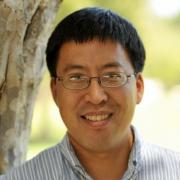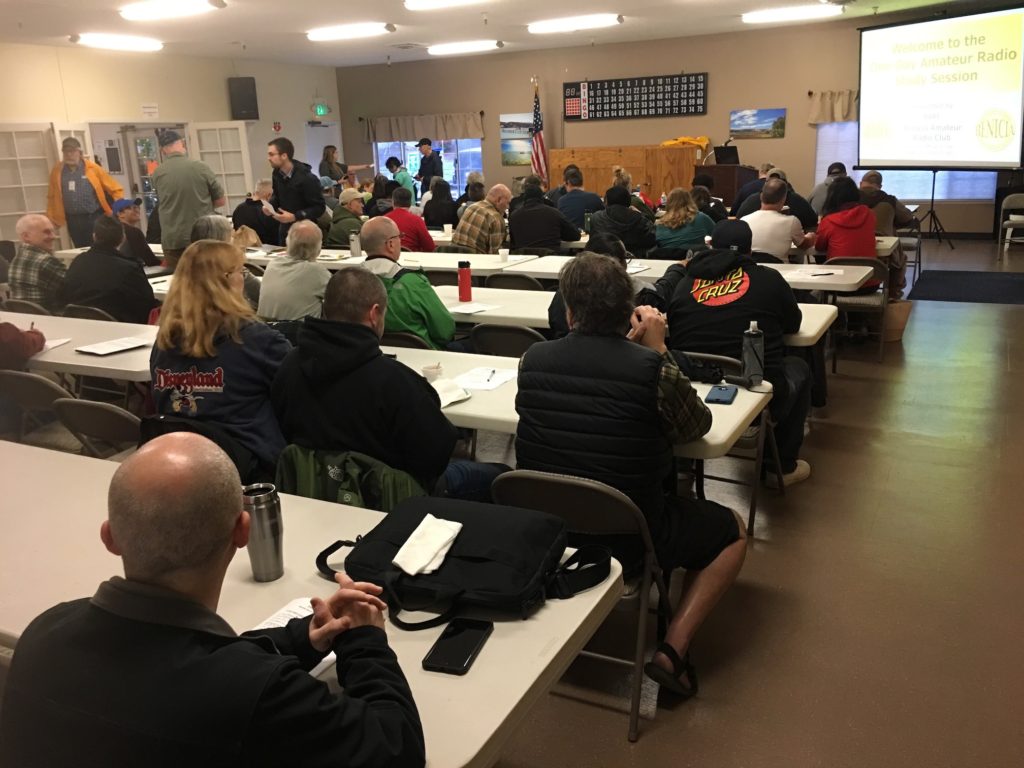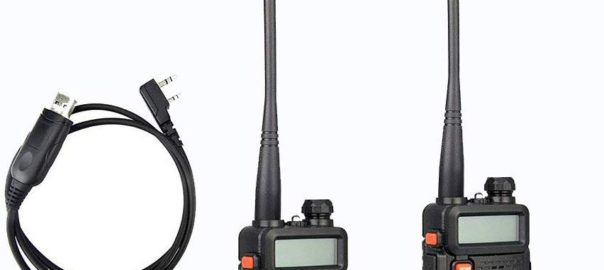Why we studied to become licensed operators
Having lived at Pepperdine University in Malibu for a over a decade, we observed that our environment contained some things that we hadn’t seen as much when living in L.A., Pasadena and Burbank. Aside from deer, pumas, sage, sand and sea some of the more notable features were more variable weather than in the basin and valleys, and more frequent power outages… and more disasters like fire and mudslides. The fire and power outages tend to put your communications down at times – we don’t have a telco powered land line and after a while the batteries in the cell towers deplete and your comms are out. Just one of those things that happens for a few hours every few years. But what if they were out for days and weeks?

In January 2018 I heard a talk by a man who had helped some people who were in that “extended communications outage” situation. I don’t quite recall how I became aware of the event, but I drove out to the East Ventura County Sherrif Station to hear Ben Kuo talk at the Conejo Valley Amateur Radio Club meeting about how his amateur radio station in SoCal helped alert the world to the plight of Dominica and save lives in the aftermath of Hurricane Maria. Amateur radio operators in the area (and Ben over 2000 miles away) were serious help and real life savers for those people. Cary and I both thought becoming amateur radio operators would be useful to keep contact with our family and help others in a “comms out” emergency.
November 2018’s events, particularly the Woolsey fire, spurred on our desire to get licensed and be able to get on the air from battery powered, infrastructure independent radios in an emergency. The Federal Communications Communications licenses amateur radio operators (aka HAMS) to transmit on a lot of frequencies, but you have to qualify by testing. So we were motivated to study to qualify and get our basic licenses (aka Technician License). I’m writing this down so I don’t forget the experience, but also to encourage others. If I learned nothing else in my education studies, I learned that people have individual learning styles that work best for them. In Cary’s and my studies for the radio license, I experienced this true observation in a very personal way. I want people to be encouraged that there is more than one way to study to get licensed and on the air.
Most people will recommend that you “Get a book”. It is a good recommendation. There is are a lot of good books out there, from the comprehensive technical manual style of the ARRL Ham Radio License Manual, to the widely acclaimed, folksy and contextual Gordon West series. Although we did buy Gordon’s Technician License book for the added context, we started (and finished) with the more licensing focused “Fast Track” audiobook by Michael Burnette. Michael’s books teach by walking through the test questions, then explaining the background material for the correct answers. He uses corny, but unforgettable, humor that helped us remember concepts. From this book, our learning paths kept diverging and converging.
Kim’s learning experience
Cary and I talked on and off after the lecture about radio. Cary got me an inexpensive but robust Software Defined Radio receiver kit for my birthday in July 2018. It was really handy for visualizing the relationship between frequency and wavelength. This pursuit of licensing took place in a period where I was acutely struggling with my eyesight. Reading printed documents was very difficult and computer screens were abominably tiring at best to impossible at worst. Phone apps, because I could hold them up to my left eye, were usable. Looking back, this vision struggle had been coming on for a long time before my “series of unfortunate events” that I’ve written about on this block — I hadn’t really read a whole book since 2004, so the idea of studying a manual was a non-starter for me. One reason I chose the Fast-track series, was the availability of an audiobook and Kindle (August 2018). The audiobook was the best and easiest for me. As I listened along, I poked around the Internet and came up with various other helps that I could manage – the ARRL test apps and the hamstudy.org learning/test app were great for checking progress and finding my weak spots. After the Woolsey fire, we agreed we needed to get serious with our quest. So, we looked for a testing experience. I wanted to do the local “1 Day Ham Class” and test with Norm & Naomi Goodkin, that I’d heard about at Ben’s talk, but the timing wasn’t right with work, etc. We found a similar class, right down the street from our longtime friends in Benicia. We checked if our friends were open to a visit the testing weekend. When they said yes, we submitted our paperwork and fee for the Feb 2, 2019 class. Now we had a deadline. Meantime, I was progressing pretty fast, so I got the General (intermediate license) class audiobook, and started listening to that. I went to the testing session with Cary. There were 90+ students in the room, plus about a dozen safety-yellow jacketed “Elmers” (Ham term for “mentor”) who were serving coffee and snacks and handling logistics, etc. Their 1 day method involved papers and highlighters. My eyes stopped focusing and I gave up. I explained I couldn’t look at the print anymore and asked if I could take my chances on the tests after lunch. They agreed. I will note that if you have any kind of learning disability, amateur radio volunteer examiners are well schooled and very happy to accommodate. If you know, just contact them in advance, and they’ll have a reader or whatever is required scheduled for you when you come to take the test.
Cary’s learning experience

Kim got an audiobook first and we listened to a chapter sometimes when we went out driving. I could understand the author, but it was too much information to remember without context. After the Woolsey fire, I was really sold on the idea and we got the paperback. Once we got the book, I could highlight and follow along with the audio and it was much easier to comprehend. After a few weeks of doing this, I felt I had the skeleton of the subject and I was more ready and less concerned about taking the test. At the testing location in Benicia, Kim and I sat while a calm voiced man (Art Mayoff) explained clearly what the process would be: There would be several sessions, each 45 minutes long followed by a break. In the handout for each session, we were to read every question, then read and highlight the correct answer. We were told, not to stop to think or ponder the wrong answers. During lunch break we walked to a Sprankle’s deli for a great sandwich. After the first session back from lunch Kim’s results were unexpectedly announced in front of the whole room – he passed the Technician and the General exams. Someone heckled, “Overachiever!” After a couple more sessions, they distributed and monitored the test. With over 90 students, and the club having to vacate the main room for the next event, there was long wait in the parking lot for the results. I felt tired, but in a good way. When the examiner came out to the parking lot and called my name to view my score I was excited to have made the grade.
Receiving our licenses
Passing our licensing exams was exciting. There were like 95 people there and I think only 2 didn’t pass. Pretty good pass rate! We had passed our tests, but we couldn’t use our 2 little handheld radios that we had bought and programmed after the fire until the FCC published our licenses online, about 2 weeks later. KM6ZTD (now KC6CLC) and KM6ZTE (now KC6ARY) were able to send our first transmissions on February 16th, 2019. We’re still learning and learning and learning. That’s the amateur radio experience at its best, new people, new experiences and more understanding of the invisible, but vital world of radio waves. We do feel like we have a way to relay info to our family or get and give help if we have a more extensive grid down experience that takes out comms infrastructure like the Internet and cell phone connections. A person with an infrastructure-independent radio, like Ben Kuo, will be listening and trying to help.
Takeaways
Kim says, “Learn just enough to pass the test.” Don’t give up because you don’t grasp everything. If you can pass, you know enough to be a safe and courteous operator. After that, the lifelong learning begins. You can take that at your own pace, and you’ll find a lot of friendly fellow learners who are fun and helpful. I can’t say enough, therefore, about the ham-in-a-day classes. Just sign up, show up and pass. Then go forth ready to begin learning your radio.
Below are some of the resources we used. Most are linked above, but the terms should give you enough to search on and come up with the exact resource.
Learning – getting your license on!
- Goodkin 1 Day Ham Class – proven effective ham-in-a-day style class for SoCal.
- Benicia ARC One Day Ham Radio Class – effective ham-in-a-day study session for NorCal.
- Gordon West WB6NOA – licensing manuals that provide context and illustrate the subject; also software and other learning aids – inductive, from the material to the test.
- Michael Burnette AF7KB – licensing manuals with humor – deductive, from the test questions to the explanation of the material. Also, free supplemental videos. Excellent self-narrated audio books, well adapted from the print versions. Kindle book also.
- Hamstudy.org – website and app for learning radio and passing the test.
- ARRL testing apps – more efficient than hamstudy app for just checking your weak spots or drilling.
- YouTube – video mentors that cover the test material comprehensively, find one that suits your style. Josh Nass, Ham Radio Crash Course (approachable, non-linear, why you want to know and why its fun); David Casler, Ask Dave (clarity for even hard concepts from a friendly mentor-style teacher)
Starting – where are my radio operators at?
- Repeaterbook App – where are the Amateur Radio repeaters? Program them into your radio
- Baofeng UV-5R Dual-Band 136-174/400-480 MHz Ham Two-way Radio – we got the 2 pack with programming cable for $50. Fantastic starter set that will become your backup a year later, when you know which of the more sophisticated options you really want. Two Baofeng radios that have come out since then that might be good starters at twice the cost are the UV5Rx3 – a better display option and more frequencies; UV82HP bigger battery and marginally more power. I wouldn’t spend more than $25-100 on your initial radio because you may then be making choices you don’t know you’re making and may not have context to evaluate.
- Local club or repeater association – we benefitted so much from the great people at the papasys.com and cara.nu repeater associations and the cvarc.org club is world class. Shop around for a group you find to be copacetic and then pay the modest dues to support and belong. A rich personal and radio experience awaits.
